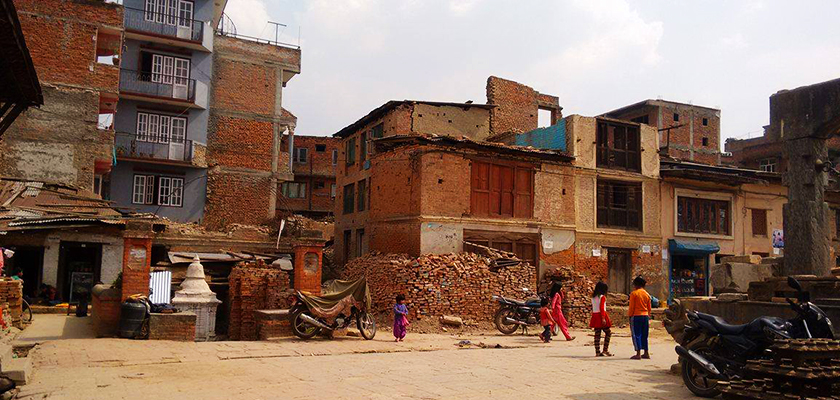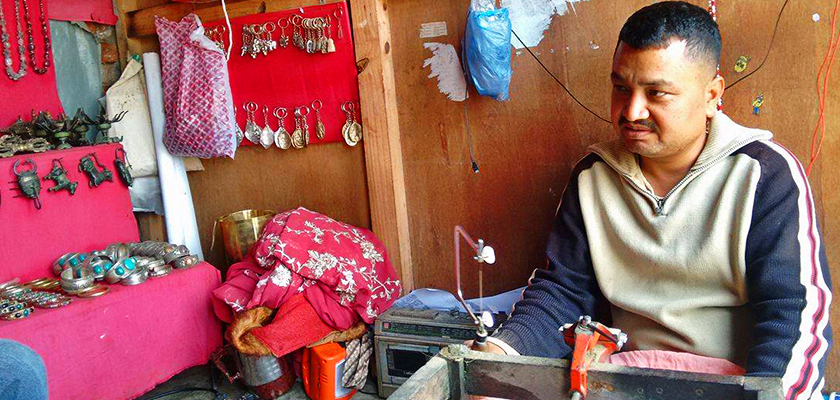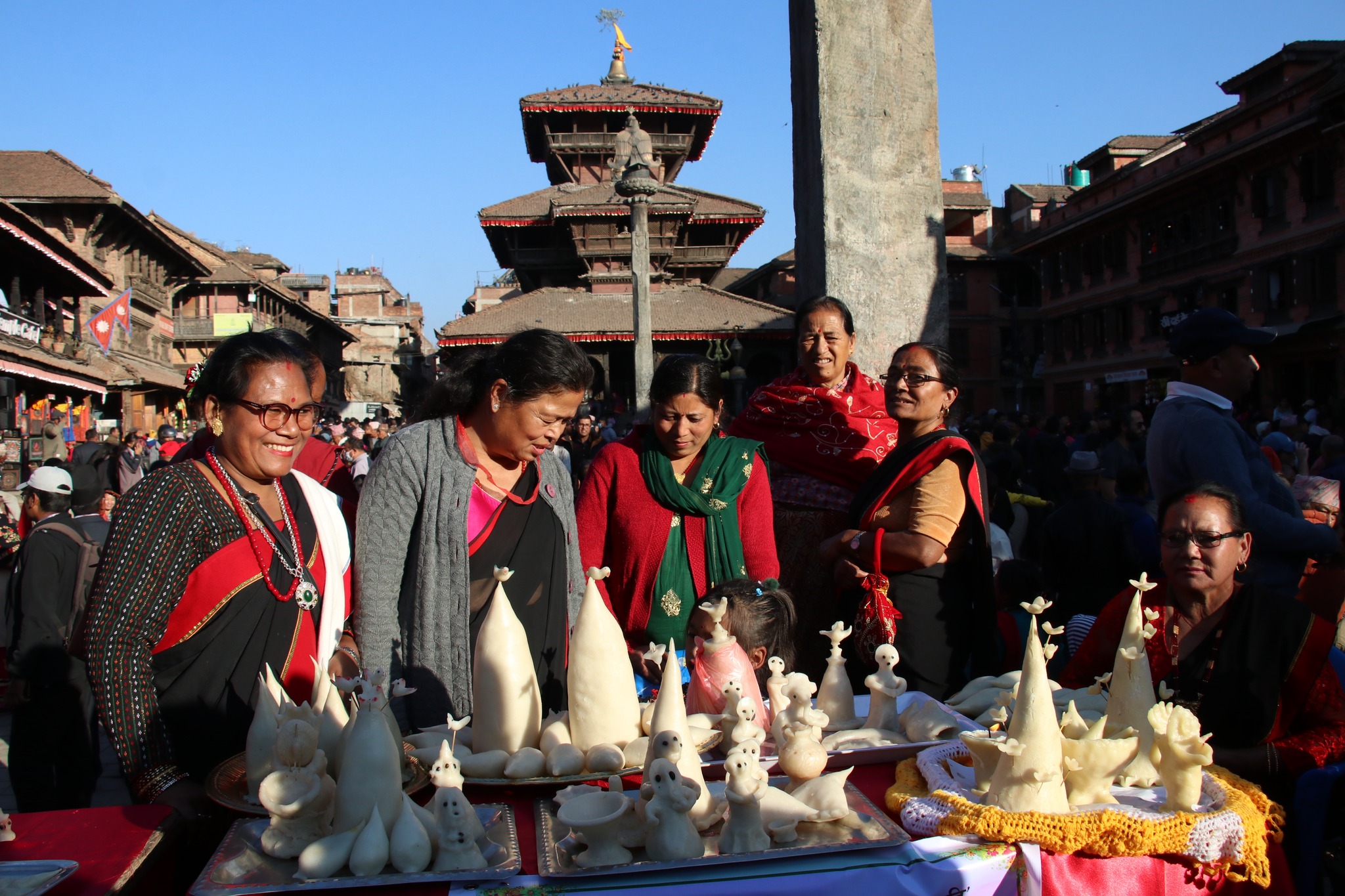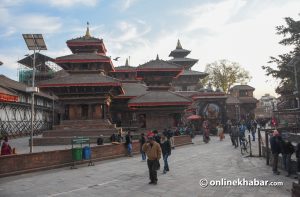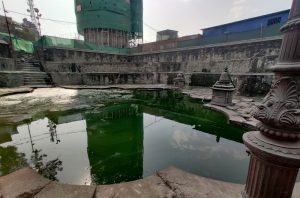Almost a year after the quake, the twin lions and bells are the only standing structures that greet visitors coming to the Machhindranath Temple in Bungmati’s main square.
It was near these two sacred objects that devotees who visited the temple used to take off their shoes as a respect for the God of Plenty, who rescued the Valley from the clutches of drought centuries ago.
Respect, of a more deep-rooted kind, prevails among the old inhabitants of Bungmati for the god, who came all the way from Kamarup in India to save a thirsty Valley. The respect, for the young and enterprising people of the town, has more to do with the economic boon the lord bestows upon them by attracting people, who’d come there for a day, but spend enough for the shopkeepers’ families to sustain themselves for months.
Silence, only disturbed by a handful of children running around, prevails at the square on a balmy spring afternoon. But it only takes a few minutes to hear the rumbling noise that is inside every resident, young or old, of this city.
Should the temple that has become ‘unworshipable’ (for both locals and tourists) be re-built before the hundreds of houses that have become unlivable, or things are to be done in the reverse order? This is the question everyone in Bungmati is grappling with.
The Sri Lankan government has said it will rebuild the temple, and different NGOs have committed to helping rebuild Bungmati. But neither of the projects have made visible progress.
Manik Shakya, in his late 30s, has not found an answer yet. Shakya, who makes a living as an artisan and a farmer, says the quake not only took away two floors of his house, but also his booming handicraft business. “This house where I have my shop, used to have four floors. Now it’s down to two,” he says. “Every time when there’s an aftershock, my heart skips a beat. My house has become unlivable, but we have nowhere to go.”
He says that both a new house, and a new temple are necessary for his survival. “When the temple was there, we used to get hundreds of tourists every day. But now hardly anyone comes here.”
Ratna Devi (centre), who lives a few minutes away from the square, thinks her house, which was devastated by the quake, is more important than the temple. The woman in her 60s lost her home, three cows, and a year’s supply of grain in the earthquake.
“The temple is important, it is the home of our god who saved us from the quake, only a few people died in the quake,” she says.
“But the ordeal we are going through cannot be ignored.”
“We’ve been living in the open for almost a year,” she says as she gathers rubble from the place where her four-storey house once stood.
Manta Bahadur, one of the many traditional carpenters in the town known for its love for wood carving, thinks houses are more important than the temple. “What is the use of a temple when its pilgrims do not have a roof over their head?” he questions.
He says that even if 30 artisans work on the temple every day, it would take at least two years to build the temple.
“But I’m not saying that the temple is not important. It was one of the things that brought tourists to the area,” he says. “Why don’t we take the temple and the housing projects together?” he asks.
(Photos: Srabasti Dey)



